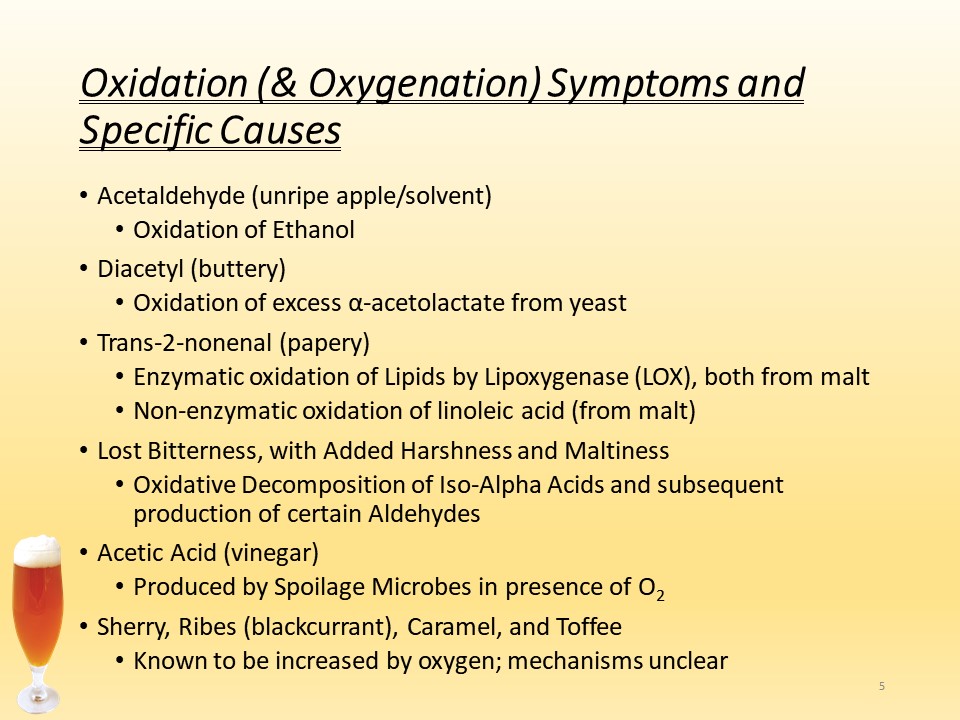So I guess there are mixed thoughts as to whether it will be an oxidized mess but I'm willing to try it this year and see. My lagers which have sat a while almost always taste better to me, so this time an intentional "aging" period might help (?)
Some important things about oxidation...
- Every beer has some dissolved oxygen and is subject to further oxygen incursion. Every beer has oxidized and will oxidize. There is
no such thing as an unoxidized beer.
- The total oxidative damage depends on things (partial list) like:
---- Total damage before packaging
---- Dissolved O2 at packaging
---- Headspace O2 at packaging
---- Oxygen incursion after packaging
---- Trace Metals in the beer
---- Amounts of antioxidants like sulfur compounds
- The rate of oxidation (i.e. how fast it gets worse) depends on all of the things listed above, plus Temperature. For every increase of 10 degrees celcius, expect staling to happen 2-3 times faster.
When people say, "I do X, and my beers aren't oxidized," or "I don't do Y, and my beers aren't oxidized," they really mean that the amount of oxidation doesn't bother them, or in fact they may like the resulting flavors. It could bother others. I've tasted some messes that the brewers thought were the t!ts.
(ETA and clarify: sulfur compounds can "use up" oxygen that would otherwise oxidize the beer. Metals are actually pro-oxidants. I should have put them on their own bullet. In fact, I will do that now.)











